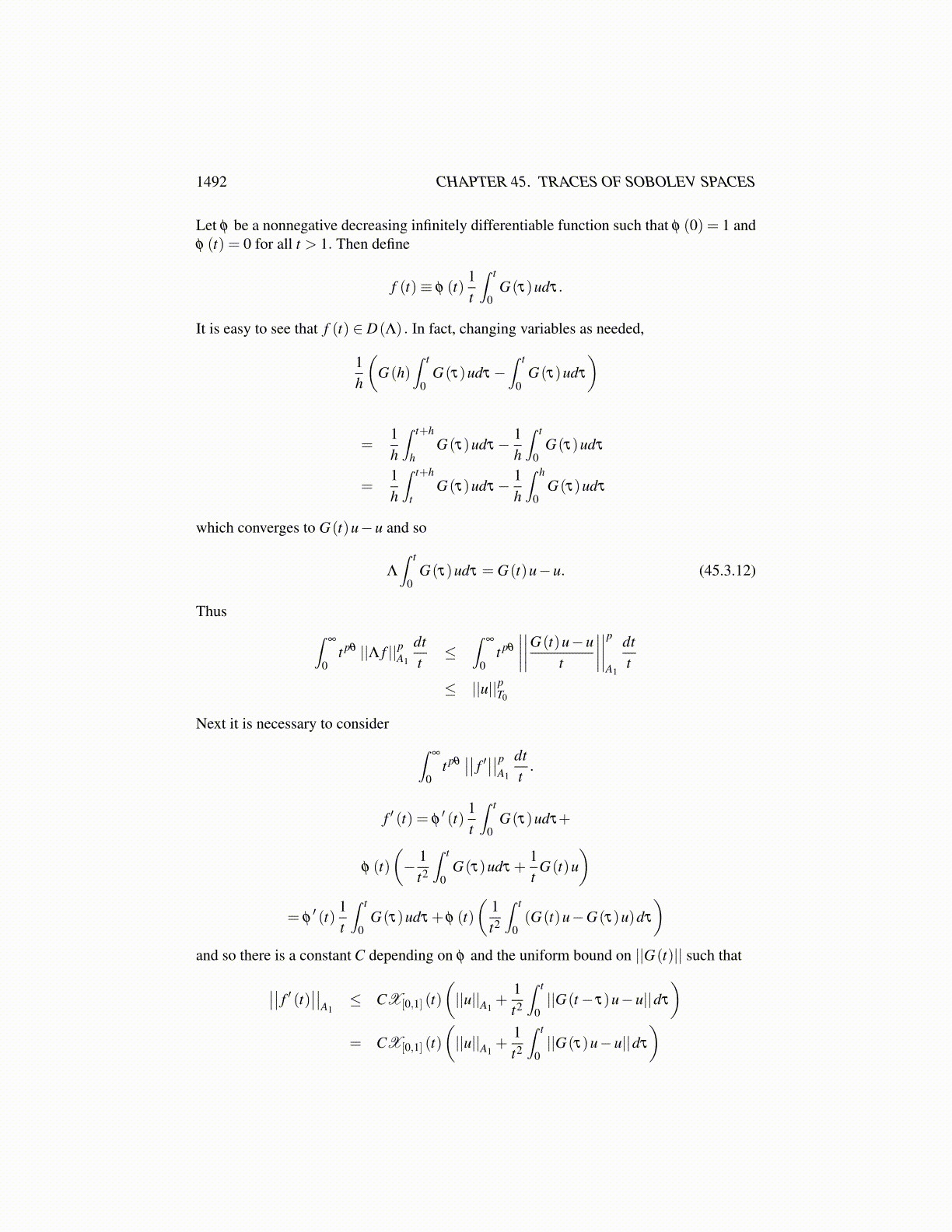
1492 CHAPTER 45. TRACES OF SOBOLEV SPACES
provided the limit exists. Since y′ exists and y(s) ∈ D(Λ) , this equals
G(t− s)y′ (s)−G(t− s)Λy(s) = 0.
Let y∗ ∈ A′1. This has shown that on the open interval (0, t), s→ y∗ (G(t− s)y(s)) has aderivative equal to 0. Also from continuity of G and y, this function is continuous on [0, t].Therefore, it is constant on [0, t] by the mean value theorem. At s= 0, this function equals 0.Therefore, it equals 0 on [0, t]. Thus for fixed s > 0 and letting t > s,y∗ (G(t− s)y(s)) = 0.Now let t decrease toward s. Then y∗ (y(s)) = 0 and since y∗ was arbitrary, it followsy(s) = 0. This proves uniqueness.
Definition 45.3.5 Let G(t) be a uniformly bounded continuous semigroup defined on A1and let Λ be its generator. Let the norm on D(Λ) be given by
||u||D(Λ) ≡ ||u||A1+ ||Λu||A1
so that by Lemma 45.3.3 the norm on A1 +D(Λ) is just ||·||A1. Let
T0 ≡
{u ∈ A1 : ||u||pA1
+∫
∞
0tθ p∣∣∣∣∣∣∣∣G(t)u−u
t
∣∣∣∣∣∣∣∣pA1
dtt≡ ||u||pT0
< ∞
}
Theorem 45.3.6 T0 = T (D(Λ) ,A1, p,θ)≡ T and the two norms are equivalent.
Proof: Take u ∈ T (D(Λ) ,A1, p,θ) . I will show ||u||T0≤C (θ , p) ||u||T . By the defini-
tion of the norm in T, there exists f ∈W (D(Λ) ,A1, p,θ) such that
||u||pT +δ > || f ||pW , f (0) = u.
Now by Lemma 44.1.4 there exists gr ∈W such that ||gr− f ||W < r, gr ∈C∞ (0,∞;D(Λ))and g′r ∈C∞ (0,∞;A1). Thus for each ε > 0,gr (ε)∈D(Λ) although possibly gr (0) /∈D(Λ) .Then letting hr (t) be defined by
g′r (t)−Λgr (t) = hr (t)
it follows hr ∈C1 (0,∞;A1) and applying Lemma 45.3.4 on [ε,∞) it follows
gr (t) = G(t− ε)gr (ε)+∫ t
ε
G(t− s)hr (s)ds. (45.3.11)
By Lemma 44.1.4 again, gr (ε) converges to gr (0) in A1. Thus∫ t
ε
||G(t− s)hr (s)||A1ds≤C
for some constant independent of ε. Thus s→ G(t− s)hr (s) is in L1 (0, t;A1) and it ispossible to pass to the limit in 45.3.11 as ε → 0 to conclude
gr (t) = G(t)gr (0)+∫ t
0G(t− s)hr (s)ds